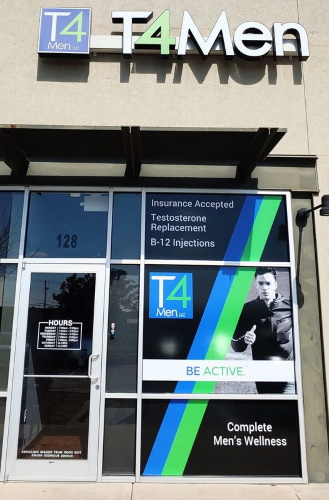"BE ACTIVE" transcends a mere motto—it's the cornerstone of the transformative experiences powered by our Testosterone Replacement Therapy (TRT) and the revolutionary "Skinny Shot" for safe and effective weight loss. Our mission is all about transforming lives. Sparking your zest for life, sculpting your body, and amplifying your confidence are just the beginning, facilitated by our staff who are not only fast and professional but also incredibly friendly. Choosing TRT and our exclusive weight management solution is a commitment to a lifestyle filled with vitality, active engagement, and relishing every moment. With us, you’re not just optimizing hormone levels or shedding extra pounds; you're investing in a dynamic, fulfilling life. Begin your journey with us, guided by our supportive team towards the best version of yourself.
What is Low Testosterone?
Testosterone is a sex hormone that plays a very important role in the body. In men, it is thought to regulate sex drive (libido), bone density, fat distribution, mental acuity, muscle mass, strength, and the production of red blood cells and sperm. Low testosterone can negatively affect all of these areas.
Testosterone Level Testing
During your initial visit a member of our professionally trained medical staff will collect a sample of your blood and evaluate your symptoms to determine whether your testosterone is low. It will also be tested to determine whether your PSA is elevated.


What is the "Skinny Shot?"
The "Skinny Shot" represents a revolutionary advancement in GLP-1 receptor activation, crucial for weight management and originally developed for diabetes care. This innovative treatment works by regulating appetite signals in the brain, leading to reduced hunger and facilitating lower calorie intake. Additionally, it slows down the process of stomach emptying, thereby increasing feelings of fullness and supporting substantial weight loss. Beyond aiding in weight reduction, this treatment also contributes to enhancing overall health, offering a significant benefit to individuals aiming for a healthier way of living.
Testosterone Replacement Therapy
If the blood test result indicates that your testosterone level is low then a treatment plan will be developed specifically for you which typically involves weekly or bi-weekly testosterone injections. Every 4-6 weeks, another blood sample will be collected at our Testosterone Replacement Clinic so your dosage may be precisely maintained.
